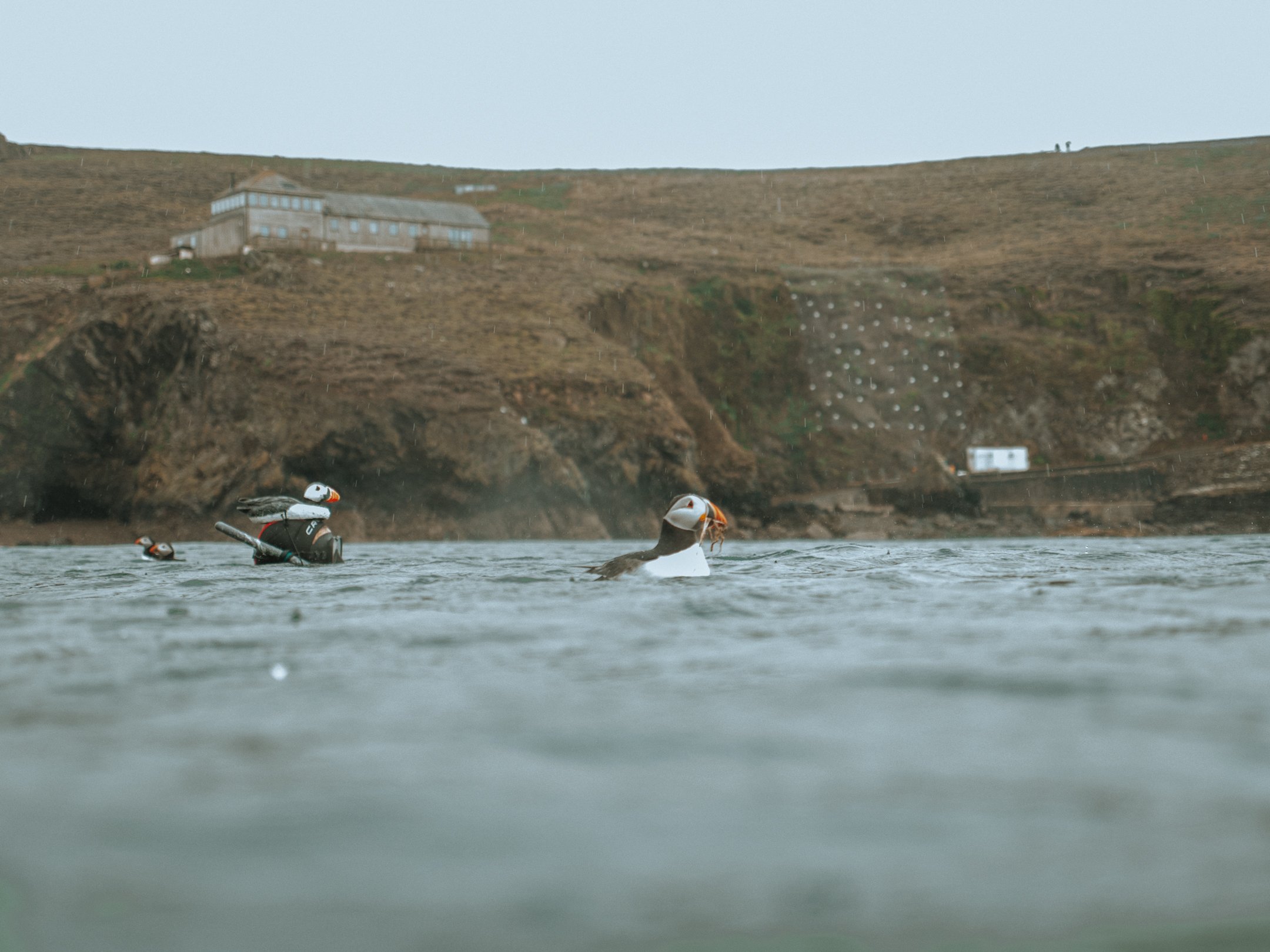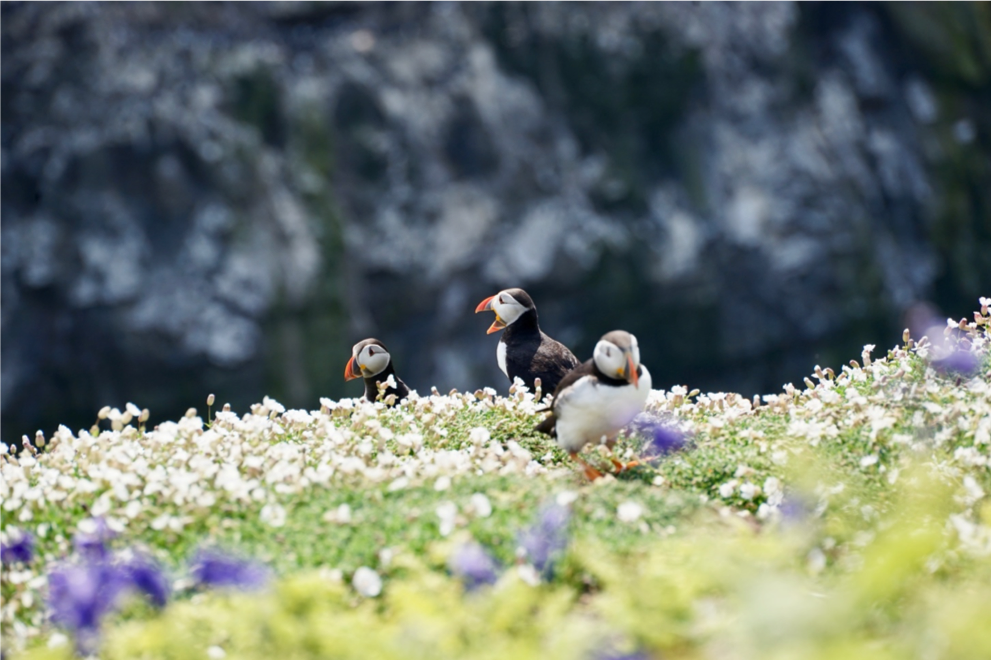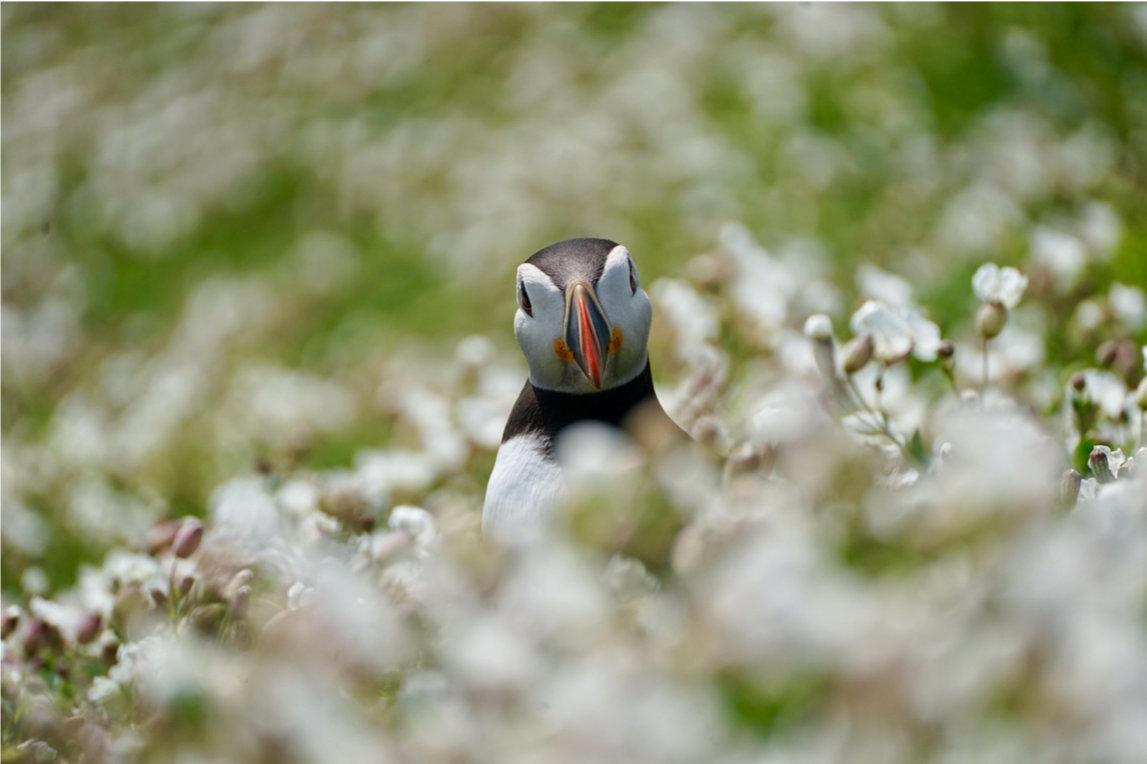An Adventure into the Celtic Deep
Josh Pysanczyn
Like many naturalists growing up in the UK, my zoological attention has been blinkered towards warmer climes. The tropical rainforests and equatorial seas. All in the hopes of immersing myself in a natural world which I believed the UK to be void of. However, the global pandemic has forced many of us to think introspectively across several aspects of our lives. We have learned to focus our thoughts inwards and so too our travels. The explorers and adventurers amongst us have been convincingly shepherded into travelling our native lands and seas, but what an earth is there to see in the “wilderness” of the British Isles? Let alone the bleak Atlantic Ocean that harasses its shores.
Here at The Marine Diaries, we have embarked on a new voyage, The Marine Diaries’ Adventures. A curation of intimate trips captained by marine biologists and ocean enthusiasts. Each expedition is tailored to incorporate citizen science, education and ocean-positive activities, leaving you feeling salty and inspired, all whilst giving something back to the ocean. As part of la première grande adventure, The Marine Diaries has teamed up with Celtic Deep, a British company owned and run by marine conservationists, wildlife enthusiasts and freedivers. Our objective is simple: to highlight the staggeringly beautiful marine wildlife that can be found in the UK’s waters. And so, a raring group of salty sea-dogs in the shape of marine biologists, wildlife journalists, photographers and ocean enthusiasts came together to test the waters – so to speak.
The rugged coastline of Pembrokeshire in the South-West of Wales. Photo: Rebecca Daniel.
Our journey begins, no less, on what National Geographic calls the ‘second best coastline in the world’. The rugged, pristine shoreline I am referring to is that of South-West Wales’ peninsula county, Pembrokeshire. This stretch of land and sea has more to offer than quiet surf and tranquil coves. Its headland is proud to call itself a National Park and is home to more Blue Flag beaches than any other county in the UK. The upwelling of deep nutrient-rich Atlantic waters against its dramatic shoreline generates a wealth of wildlife which arrive in large numbers from the sea and the sky. It’s not uncommon to see porpoises and common dolphins dancing amongst the waves, whilst its beaches and bays are home to over 5,000 Atlantic grey seals. This is all before we’ve even reached the 440 million year old Silurian volcanic islands.
A short drive from the 19th century artillery fort located on the jagged promontory of the sleepy fishing village Dale brings you to the natural bay of Martin’s Haven. It is here where The Marine Diaries’ Adventure begins. As we step foot onto the bobbing deck of the Helen Clare, a South-Westerly air of anticipation seeped through our inner layers. The skiff chugged its way out of the haven at a casual rate of knots; giving your legs just enough time to adjust to the ebbing and flowing of the incoming tide. The dramatic cliffs contorted against the grains of gravity and stood to attention for our departure. The Marine Diaries’ Adventure was underway.
Our vessel for the day, the Helen Clare. Photo: Kristen Johnson.
Of the Silurian volcanic rocks we set our bearings towards, the largest, Skomer Island, forms a pinch at its midriff, creating a secluded Northern and Southern Haven. As we cruised into the mouth of its Northernmost cove, two harbour porpoises (Phocoena phocoena) hugged the headland as a brace of stray Northern gannets (Morus bassanus) drifted overhead. These shy cetaceans are commonly found near the coastal habitats and as such are particularly vulnerable to ghost fishing and other human disturbances including chemical and noise pollution. Like all marine mammals, harbour porpoises are protected by the Marine Mammal Protection Act 1972.
Our raring group of salty sea-dogs in the shape of marine biologists, wildlife journalists, photographers and ocean enthusiasts. Photo: Rebecca Daniel.
As we approached the volcanic cliffs on Skomer we caught a glimpse of the bird many of us had come to see. Chaotically tumbling around a meter from the surface of the water, feet spread like two orange fans, the charismatic flight of the Atlantic puffin (Fratercula arctica) was immediately recognisable. Around 10% of the population of Atlantic puffins choose Britain and Ireland as their breeding grounds, where these colonial birds dig hollows in the soil to build their seaweed and feather nests and lay their singular egg. The Atlantic puffin’s Latin name aptly means the ‘little brother of the North’, and quite right - they are much smaller than anticipated. Remarkably adapted for fishing, the puffin’s barbed tongues prevent slippery sand-eels from escaping their demise whilst concertina like folds of skin at the base of the beak can hold 10 fish at once! During the winter seasons, the beaks of both male and female puffins remain slightly drab, having shed their fantastic colouration to spare the cost of producing of this energy-expensive ornament. Come spring and the mating season, however, when the birds flock to the island, the ornate bright orange and yellow colourations saturate their beak once more, drawing attention to their health and strength as a monogamous partner.
The North Haven of Skomer Island was crowded with seabirds. An amphitheatre of Razorbills (Alca torda), floating on the surface of the water pruning their partner; Guillemots (Uria aalge), ferociously defending their peculiar eggs amongst a cacophony of parenthood, and black-backed gulls (Larus marinus) precariously looked on for an easy meal.
No sooner had we stopped, The Marine Diaries crew were sliding into their conditioned wet-suits, gearing up for the brisk water. Decoy puffins in hand (or head…), we took the plunge and drifted towards a rocky outcrop in the hopes of catching a glimpse of an Atlantic grey seal (Halichoerus grypus). Floating past their rocky slumbering post, several canine-like faces began appearing a stone’s throw from our own. Seals have a wonderfully playful air about them - curious and charming. They danced in the kelp beneath our fins as we turned our direction towards the seagrass meadows nearer the shoreline. Seagrass (Zostera marina) is the only flowering plant found in British waters that grows and produces seed entirely under water, and are listed as nationally scarce. The meadows are home to an abundance of marine wildlife, providing the ideal shelter and nourishment for species including European spider crabs (Maja brachydactyla), juvenile cod (Gadus sp.), snake pipefish (Entelurus aequreous) and sea hares (Aplysia punctate).
A puffin decoy strapped to the head of an enthused ocean advocate is plenty convincing to an oblivious Atlantic puffin (Fratercula arctica). Photo: Laura Pennafort.
After more than an hour, we slowly kicked our way back to the boat and moved on towards the neighbouring island of Skokholm. A gently sloping red sandstone island, surprisingly well grazed by a population of peculiarly large, black rabbits introduced by Norman rabbit farmers in 1324. Atop of this, about as many resident and migratory terrestrial and seabird species as you can think of call Skokholm home: Manx shearwaters (Puffinus puffinus), oystercatchers (Haematopus ostralegus) and storm petrels (Hydrobates pelagicus), to name but a few.
Taking the plunge for a second time, I was feeling content. With the visibility a touch below par, I decided to kick back on the surface, remove my weights and enjoy the buoyancy of my 7mm wetsuit. I watched the world turn through its motions, grey seals resting on the rocks, our little brothers of the North (Atlantic Puffins) skimming overhead.
But we only begun to scrape the surface of the iconic British wildlife regularly spotted in this area. The deeper water off the coast, also known as the Celtic Deep, is frequented by common dolphins (Delphinus delphis), Sunfish (Mola mola), Risso dolphin (Grampus griseus), long-finned pilot whale (Globicephala melas) and 5 species of jellyfish. If you’re lucky, you may even catch glimpse of a breaching thresher shark (Alopias vulpinus), passing blue fin tuna (Thunnus thynnusor) or a passing of the second largest fish in our ocean, the basking shark (Cetorhinus maximus). In July, The Marine Diaries will be heading out for a full day trip to the Celtic Deep in search of some of these iconic species.
Atlantic puffins (Fratercula arctica) on Skomer Island, Pembrokeshire. Photos: Molly McNamara-Langton.
Having received our fix of wildlife, a dozen or so ocean enthusiasts returned back to Martin’s Haven. After a day filled with ocean life, we spent the remainder of the afternoon giving back to the ocean by conducting a beach clean and hunting for shark egg cases, all topped off with some sustainable rum from Aluna Coconut by the fire. The Marine Diaries’ Adventures lived up to its name and opened my eyes to the experiences to be had right here on my doorstep on the British Isles.
If this sounds like your type of adventure, why wait - visit The Marine Diaries’ Adventures and book your place for our July trip below. All the details can be found here. Have a flick through the brochure outlining our mission with this trip, the partners and collaborators involved, and more details of the adventure including itinerary, accommodation and costs.








